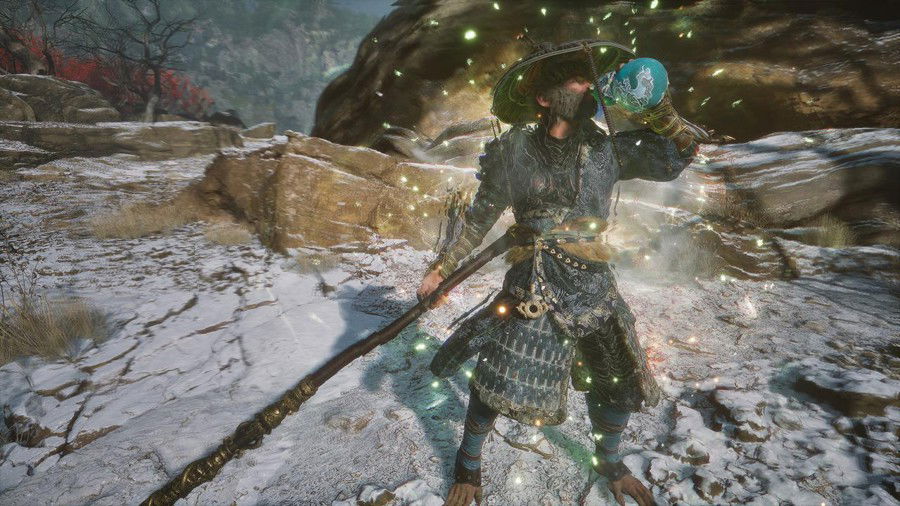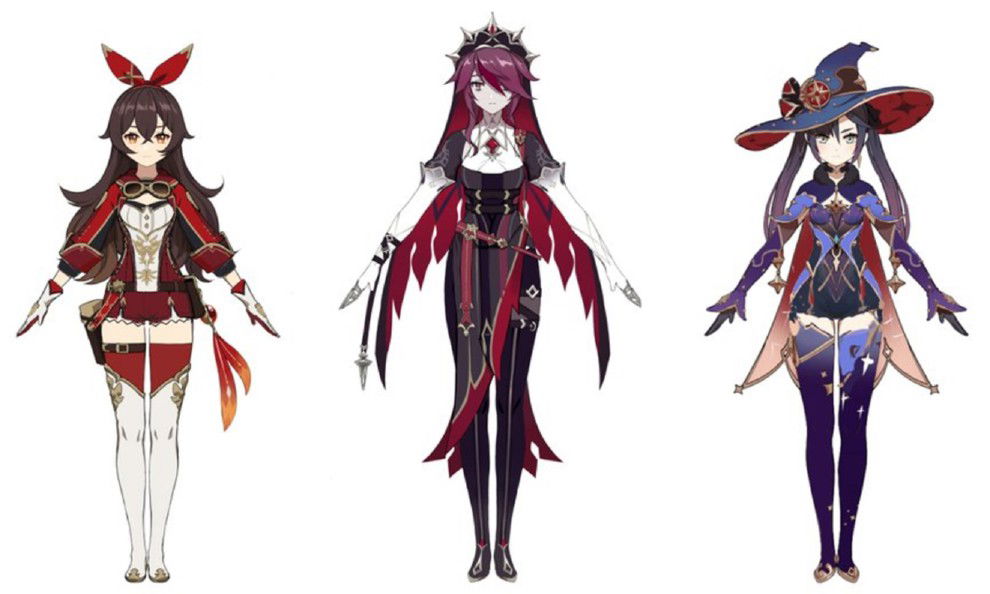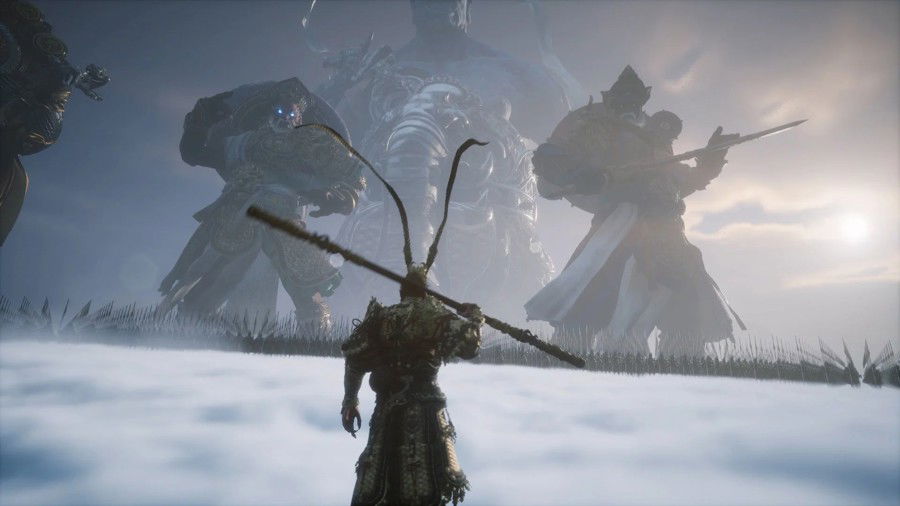Have you ever wondered why Chinese games like Black Myth: Wukong are increasingly gaining ground in the Western market? Black Myth, Wuchang: Fallen Feathers, Dungeons & Dragons, Stellar Blade, and other games from China are increasingly available on consoles, PCs, and subscription services like Game Pass.
Have you ever thought about how many games with visuals that were once reserved primarily for mobile phones—with beautiful, stylized characters in those typical Chinese fantasy robes, people flying on swords, and other features we previously saw mainly in mobile city-building and management games—are now arriving in force on Steam and the PS Store?
Why is China increasingly present in a territory previously dominated by Western or Japanese studios? Let's talk about the reasons that are bringing these games increasingly to our big screens. If you have any questions, just leave a comment.
The Turn that already happened
Over the past five years, Chinese-made games have gone from being "exotic" to becoming mainstream on PC, consoles, and mobile in the West. In 2024, Black Myth: Wukong debuted with huge amazing sales numbers: 4.3 million copies on the first day, 10 million in seven days, and over 2.4 million concurrent players on Steam, making it the largest peak for a single-player game on the platform. This wasn't just a good launch; it was a cultural and technological milestone that dismantled the myth that China "only does mobile."

After all, on mobile, the dominance was already visible. Genshin Impact, from Hoyoverse, surpassed $5 billion in China alone and is on track to reach $10 billion globally, while Zenless Zone Zero, also from Hoyo, surpassed $100 million within a few weeks of its global launch. Honor of Kings expanded to over 160 countries, maintaining its recurring leadership in global revenue.
In parallel, giants like Tencent report acceleration outside of China, with strong growth abroad in 2025. The vector is clear: Chinese content is already mainstream in gamers' pockets and now also scales on the big screen of consoles and PCs.
Black Myth: Wukong is made in Unreal Engine 5, using technologies like Nanite and Lumen. The result is evident in the game's reviews: a visually stunning "tour" through mythological China, with scale, materials, and lighting that push the envelope for this generation. The point isn't just the engine; it's the game's maturity: motion capture, location photogrammetry, and meticulous artistic production that align spectacle with its own identity, without the pressure to produce a game quickly to sell quickly, without complaints of "crunch," and without pressure. This leap in ambition has allowed the game to compete on equal terms with major Western AAAs.
Topics that speak to the world
Using little-known Chinese stories as a "cultural gateway" was a smart move. Wukong is based on the story Journey to the West, a classic that has permeated the global imagination for decades, mainly thanks to the anime Dragon Ball. The game translates Chinese mythology into modern action language that Western audiences understand: combat that demands precision parrying and counterattacking, clear skill progression, and memorable bosses. The "local culture + global beauty" formula also appeared on mobile (with the anime aesthetic of Genshin/Honkai, and regional heroes/skins in Honor of Kings), reducing the cultural friction of very Chinese characters, but without diluting their identity.
Another differentiator was the way it reached the global market. Simultaneous worldwide releases, a day-one release on PS5 and PC, and, when appropriate, platform partnerships to expand its reach, as was the case with Genshin Impact and Sony. Wukong, for example, led global sales on Steam in its opening week; the Xbox version was delayed for optimization reasons (transparently communicated), demonstrating a focus on quality across platforms. For other titles, deals like "day one on Game Pass" (e.g., Wuchang: Fallen Feathers, from another Chinese studio, have become a showcase for millions of subscribers and accelerated word of mouth in the West.
Community, streaming, and organic “discovery”
During its launch week, Wukong was one of the most-watched games on Twitch, with millions of hours watched. The impact of streams, speedruns, and reactions is particularly strong in challenging games with iconic bosses, where each victory becomes a music video. This cycle of organic discovery is reinforced by the game's localization, active social media community pages, and a global communications team. Honor of Kings, for example, launched worldwide with support for 14 languages.
Chinese studios understand the importance of speaking their players' languages, something some took years to master. Other initiatives, such as seasonal events and community-driven promotions, are also part of this strategy.
In Genshin Impact, revenue spikes accompany events like the Lantern Rite and 5-star characters released with each update; Zenless Zone Zero replicated this trend by debuting with constant events and updates.
This creates habit, keeps creators producing content, and sustains engagement between premium game patches. All of this leads to a constant dominance in terms of sales and download numbers.
Global publishers, monetization and know-how
China's domestic regulatory environment has seen a flurry of regulatory ups and downs since 2021. In 2024, restrictive proposals even overturned lawsuits before authorities adjusted their course. For example, MiHoyo became Hoyoverse and created the Thailand-based studio, Coghno Sphere, to circumvent Chinese government laws and censorship for the West while making adjustments to accommodate government requests for the game to continue distribution there.
In practice, Jean, Rosária, Mona, and Amber received new, more "proper" skins that became standard on Chinese servers but optional on Western servers.

This has pushed part of the industry to accelerate international distribution plans, diversifying revenue and reducing exposure to local uncertainties. While adapting to the local market, these strategies helped the studios stabilize operations, while "Plan B"—growing in the Western market—is already underway, demonstrating that there isn't a single "Chinese way" to monetize, but rather a fit by platform and audience:
• Premium/AAA on console and PC, when the proposal justifies it (Wukong case).
• Free-to-play with gacha and events on mobile, when the social loop and cadence support LTV (Genshin, Honkai, Zenless).
• Competitive F2P on a massive scale (Honor of Kings), with progressive global expansion and content sensitive to local cultures.
The result is a diversified portfolio that dilutes risk and captures distinct audiences in the West.
Like HoyoVerse, companies like Tencent and NetEase not only publish their own games; They created international distribution arms, invested in Western studios, and learned Western media and user acquisition channels.
In 2025, Tencent highlighted growth outside of China as the driver of its results, signaling that “product-market fit” for Western audiences is no longer an exception. This translates into better campaigns, more presence at events and more mature relationships with platforms for longer and in a constant manner over the years.
Why Wukong became a symbol
Black Myth: Wukong isn't an isolated case. It was the first to attract a lot of attention, but it's not alone. Other major Chinese games are already ready or nearly ready to hit the Western market.
Some examples:
• Wuchang: Fallen Feathers will be released directly on Game Pass, so many people will be able to play it right away.
• Phantom Blade Zero appeared at major gaming events and attracted attention for its visuals and combat.
• Furthermore, well-known games like Genshin Impact, Honkai: Star Rail, and Zenless Zone Zero continue to receive updates and maintain active players worldwide.

In short, China hasn't just released a single successful game. There's a string of planned releases, demonstrating that the country has become a new hub for major games in the West, as Black Myth: Wukong and other Chinese games combine several strengths that explain their Western "conquest":
• A clear premium proposition for console/PC, with cutting-edge technical execution in UE5.
• A strong cultural identity translated into the global language of a challenging action RPG.
• An efficient global launch, prioritizing platform quality and communicating transparently about limitations.
• A network effect through creators and streaming, amplifying reach and legitimizing the game as an "event."
• A signal to the market: This demonstrates that the Chinese AAA path is commercially viable and desired by platforms and audiences.
Sales figures, peak player numbers, and Steam leadership place this success story on par with elite Western launches.
What changes for the public and the Western market
1. More variety in aesthetics and mythology. The West gains access to fresh universes, weapons, monsters, and legends, moving away from the Greco-Norse or medieval European repetition.
2. Higher technical standards. Visuals, animation, and scale have become a must, not a differentiator. The bar that Wukong pulled is putting pressure on other AAAs.
3. Service as a routine. Even premium players see more active post-launch content, events, and "cadences" that were previously typical only of mobile.
4. More aggressive platforms. Sony, Microsoft, Valve, and mobile stores are competing for Chinese content as a key to differentiation and growth.
5. Global marketing and community. Launching "truly localized" (text, voice, social media, regional influencers) has become a baseline, not a luxury.
What to watch in the next 12–24 months:
• Content cadence in Wukong. How Game Science will support the "post-game" and pending versions, including Xbox, and whether there will be expansions. Transparency in optimization was a good first step.
• LTV and cannibalization in the HoYoverse ecosystem. Can Zenless and Honkai grow without killing Genshin? Recent data shows a rotation of peaks per event, and this defines future investment.
• Expansion of Honor of Kings. How much revenue the global operation converts outside of China, now that infrastructure and languages are in place.
• More Chinese AAAs on the trade show stage. Consistent presence at Summer Game Fest, State of Play, etc. indicates a stable pipeline, not a bolt from the blue.
Conclusion
Chinese games are conquering the West because they combined three levers simultaneously:
1) A competitive product in terms of quality and identity;
2) A global go-to-market, with partnerships and timing;
3) A sharp operation that dominates live-ops, community, and platforms.
Black Myth: Wukong is the most visible symbol of this shift because it translated local mythology into a universal spectacle, used cutting-edge technology to deliver a compelling AAA game, and was launched as a global event, not a curiosity.
The rest of the portfolio confirms the trend: mobile remains dominant in revenue and engagement, and now console/PC gains a new, relevant production hub. The "China standard" is no longer an exception but a structural part of the Western market.












— Comments 0
, Reactions 1
Be the first to comment